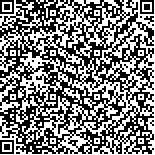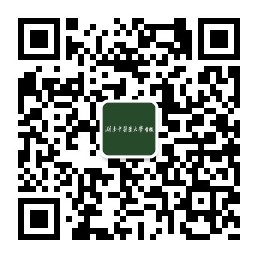| 引用本文: |
邓婕, 廖远平, 颜家朝, 喻京生.祛风止痒方超声雾化对过敏性结膜炎模型兔炎症因子IL-3、IL-5、GM-CSF、TSLP及相关蛋白表达的影响[J].湖南中医药大学学报,2024,44(11):1968-1974[点击复制] |
|
| |
|
|
| 本文已被:浏览 1502次 下载 737次 |
| 祛风止痒方超声雾化对过敏性结膜炎模型兔炎症因子IL-3、IL-5、GM-CSF、TSLP及相关蛋白表达的影响 |
| 邓婕,廖远平,颜家朝,喻京生 |
| (湖南中医药大学, 湖南 长沙 410208;湖南中医药大学第一附属医院, 湖南 长沙 410007) |
| 摘要: |
| 目的 观察祛风止痒方超声雾化对过敏性结膜炎(allergic conjunctivitis, AC)模型兔结膜组织中Janus酪氨酸激酶2/信号转导子和转录激活子5(Janus kinase2/signal transducer and activator of transcription5, JAK2/STAT5)信号转导通路关键细胞因子白细胞介素-3(interleukin-3, IL-3)、白细胞介素-5(interleukin-5, IL-5)、粒细胞-巨噬细胞集落刺激因子(granulocyte-macrophage colony-stimulating factor, GM-CSF)及胸腺基质淋巴细胞生成素(thymic stromal lymphopoietin, TSLP)表达的影响。方法 选取健康成年新西兰长耳大白兔36只,按照随机数字表法分为对照组、模型组、奥洛他定组、祛风止痒组,每组9只。对照组不予处理,其余组分别于实验第0、7天予静脉注射含卵清蛋白(ovalbumin, OVA)和佐剂氢氧化铝的混合物致敏,此后每天采用OVA、磷酸盐平衡生理盐水混合物局部每天滴眼1次,连续14 d,以加强致敏,建立AC模型。造模成功后,奥洛他定组用盐酸奥洛他定滴眼液滴双眼,祛风止痒组用祛风止痒方超声雾化治疗,连续给药14 d。造模期间裂隙灯下观察兔眼前节临床表现,并采用Magone计分法行眼部症状临床评分。末次给药24 h后,以摘眼球法采血并取兔睑结膜组织,ELISA检测血清IL-3、IL-5、GM-CSF及结膜组织TSLP含量,Western blot检测结膜组织JAK2、STAT5蛋白表达水平。结果 模型组Magone评分明显高于对照组(P<0.05),说明AC模型制备成功。与对照组比较,模型组兔眼部可见明显的结膜充血、分泌物及流泪表现;与模型组比较,奥洛他定组及祛风止痒组兔眼部结膜仅见少量充血、分泌物,流泪症状减轻。与对照组比较,模型组血清IL-3、IL-5、GM-CSF及结膜组织TSLP含量均升高(P<0.05),结膜组织中JAK2、STAT5蛋白表达水平均升高(P<0.05);与模型组比较,奥洛他定组及祛风止痒组血清IL-3、IL-5、GM-CSF及结膜组织TSLP含量均降低(P<0.05),结膜组织中JAK2、STAT5蛋白表达水平均下降(P<0.05);与奥洛他定组比较,祛风止痒组血清IL-3、IL-5、GM-CSF及结膜组织TSLP含量差异均无统计学意义(P>0.05),结膜组织中JAK2、STAT5蛋白表达水平均升高(P<0.05)。结论 祛风止痒方超声雾化对OVA诱导的AC样症状有明显疗效,其作用机制可能与抑制JAK2/STAT5信号转导通路中关键细胞因子,进而减轻炎症反应有关。 |
| 关键词: 祛风止痒方 超声雾化 过敏性结膜炎 JAK2/STAT5信号 白细胞介素-3 白细胞介素-5 粒细胞-巨噬细胞集落刺激因子 胸腺基质淋巴细胞生成素 |
| DOI:10.3969/j.issn.1674-070X.2024.11.005 |
| 投稿时间:2024-06-17 |
| 基金项目:国家中医药管理局中医药循证能力建设项目(2019XZZX-YK007);湖南省“十四五”中医药领军人才和学科带头人培养项目(湘中医药综合处便函〔2022〕4号);湖南省自然科学基金面上项目(2022JJ30460)。 |
|
| Effects of ultrasonic nebulization of Qufeng Zhiyang Formula on the expressions of inflammatory factors IL-3, IL-5, GM-CSF, TSLP, and related proteins in rabbit models of allergic conjunctivitis |
| DENG Jie, LIAO Yuanping, YAN Jiazhao, YU Jingsheng |
| (Hunan University of Chinese Medicine, Changsha, Hunan 410208, China;The First Hospital of Hunan University of Chinese Medicine, Changsha, Hunan 410007, China) |
| Abstract: |
| Objective To observe the effects of ultrasonic nebulization of Qufeng Zhiyang Formula (QFZYF) on the expressions of key cytokines in the Janus kinase 2/signal transducer and activator of transcription 5 (JAK2/STAT5) signal transduction pathway, including interleukin-3 (IL-3), interleukin-5 (IL-5), granulocyte-macrophage colony-stimulating factor (GM-CSF), and thymic stromal lymphopoietin (TSLP), in the conjunctival tissue of rabbit models of allergic conjunctivitis (AC). Methods Thirty-six healthy adult New Zealand white rabbits were selected and divided into control group, model group, olopatadine group, and QFZYF group according to the random number table method, with nine rabbits in each group. The control group received no treatment. The other groups were sensitized on days 0 and 7 by intravenous injection of a mixture containing ovalbumin (OVA) and aluminum hydroxide adjuvant; subsequently, a mixture of OVA and phosphate-buffered saline was instilled into the eyes once daily for 14 consecutive days to enhance sensitization and establish the AC model. After successful modeling, the olopatadine group was treated with olopatadine hydrochloride ophthalmic solution in both eyes, while the QFZYF group received ultrasonic nebulization therapy with QFZYF, for 14 consecutive days. During the modeling period, the anterior segment of the rabbit eye was observed under a slit lamp, and clinical scores for ocular symptoms were assessed using the Magone scoring system. Twenty-four hours after the last administration, blood was collected by enucleation, and conjunctival tissue from the rabbit eyelid was obtained. The levels of serum IL-3, IL-5, GM-CSF, and conjunctival TSLP were measured by ELISA, and the protein expression levels of JAK2 and STAT5 in conjunctival tissue were determined by Western blot. Results The Magone scores in the model group were significantly higher than those in the control group (P<0.05), indicating the successful establishment of the AC model. Compared with the control group, the rabbits in the model group exhibited obvious conjunctival hyperemia, secretions, and tearing in their eyes. In contrast, the rabbits in the olopatadine and QFZYF groups showed only mild conjunctival hyperemia and a small amount of secretions, with reduced tearing symptoms compared to the model group. Compared with the control group, the levels of serum IL-3, IL-5, GM-CSF, and conjunctival TSLP were elevated in the model group (P<0.05), and the protein expression levels of JAK2 and STAT5 in conjunctival tissue also increased (P<0.05). Compared with the model group, the levels of serum IL-3, IL-5, GM-CSF, and conjunctival TSLP decreased in both the olopatadine and QFZYF groups (P<0.05), and the protein expression levels of JAK2 and STAT5 in conjunctival tissue were also reduced (P<0.05). However, there were no statistically significant differences in the levels of serum IL-3, IL-5, GM-CSF, and conjunctival TSLP between the olopatadine group and the QFZYF group (P>0.05), although the protein expression levels of JAK2 and STAT5 in conjunctival tissue were higher in the QFZYF group (P<0.05). Conclusion Ultrasonic nebulization of QFZYF has significant therapeutic effects on OVA-induced AC-like symptoms. Its mechanism of action may be related to inhibiting key cytokines in the JAK2/STAT5 signal transduction pathway, thereby reducing the inflammatory response. |
| Key words: Qufeng Zhiyang Formula ultrasonic nebulization allergic conjunctivitis JAK2/STAT5 signaling interleukin-3 interleukin-5 granulocyte-macrophage colony-stimulating factor thymic stromal lymphopoietin |
|

二维码(扫一下试试看!) |
|
|
|
|




